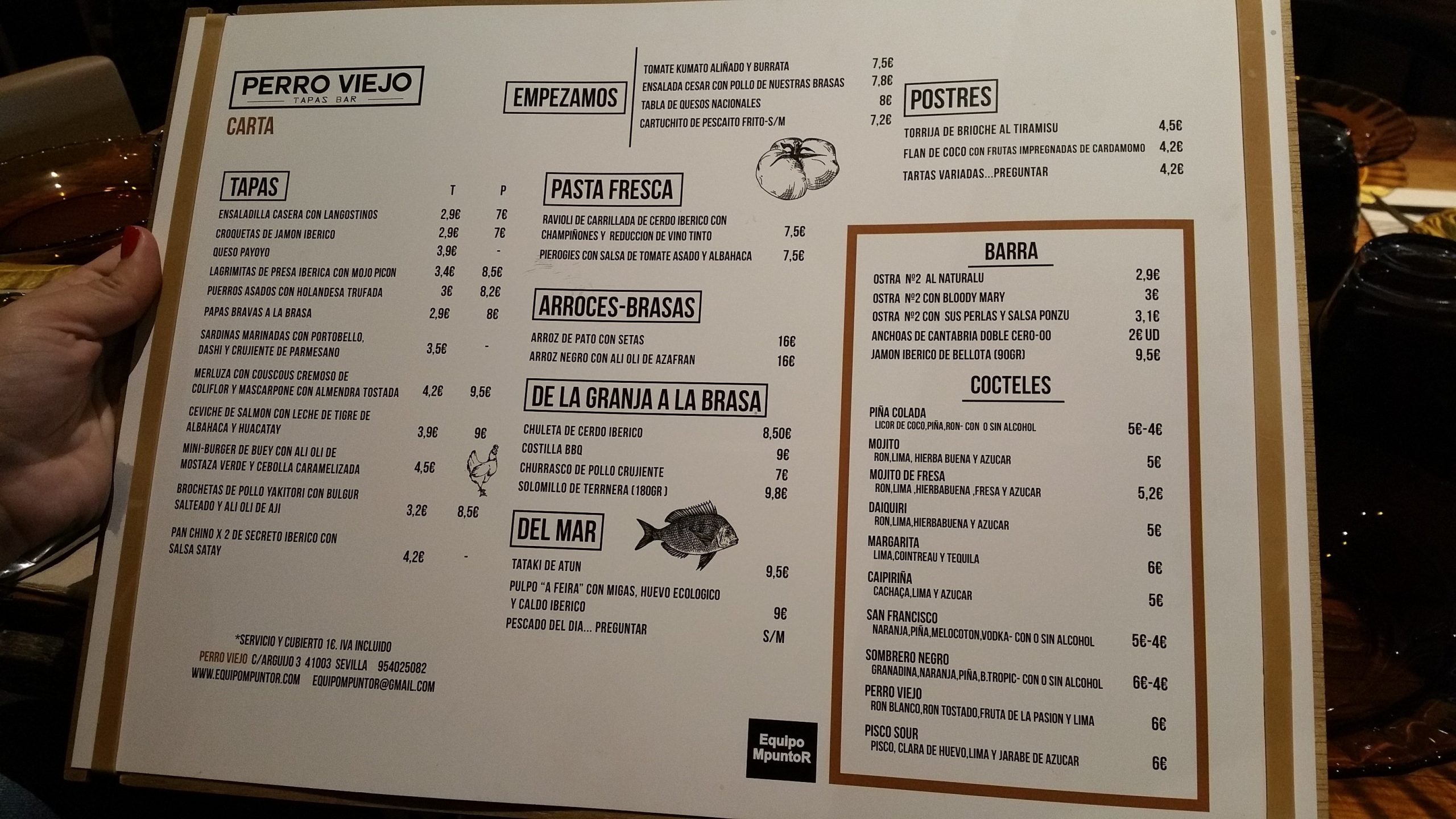Unidad 3: Las comidas y los restaurantes
5. Avancemos con las comparaciones: vamos a comparar comidas, alimentos y restaurantes durante una conversación
As you explore different eateries, shops or have various experiences, you will form opinions about them. We have a tendency to use comparisons to support our opinions and hence, knowing how to make comparisons will help you articulate those opinions with greater ease.

Aprendamos: En las Notas 2.3.6 vas a encontrar como hacer comparaciones en español. Deberás escribir a continuación las palabras claves y las estructuras que necesitas utilizar. Note the TAREA in the powerpoint.
To indicate a comparison of a characteristic/adjective:

To indicate more à _________ __________ ____ or
To indicate less à _________ __________ ____
To describe an action (quantifying an adverb):
To indicate moreà _________ __________ ____ or
To indicate less à _________ __________ ____
To quantify a noun:
To indicate moreà _________ __________ ____ or
To indicate less à _________ __________ ____
To compare items using numbers, we would say más de o menos de and then the number.
Tengo más de 4 cursos este semestre. Tengo menos de 25 estudiantes en la clase.
The 4 “irregulars” in which you do not need to use “más or menos”. In English, we do not say “more good”; we use the term “better”. However in Spanish, you may use the literal translation of the two words to mean better “más bueno” or simply state “mejor”.
Comparison irregulars:
Más bueno “more good” à ______________ better
Más grande “more big” à ______________ bigger/ older
Más malo “more bad” à ______________ worse
Más pequeño “more small” à ______________ smaller, younger

Comparemos el menú de dos restaurantes: El Perro Viejo and El Botín. Consulta el sitio web 2.3.7. Después de analizar los menús, investiga sobre los restaurantes y su reputación.
a. El Botín
b. El Perro Viejo–menú
Answer the following questions using the comparison structures when applicable based on the restaurants El Perro Viejo and El Botín.

- ¿Cuál restaurante es la mejor opción para los vegetarianos? _________________________________________
- ¿En cuál restaurante son más caras las croquetas? _________________________________________
- ¿Cuál restaurante tiene más opciones en los platos fuertes? _________________________________________
- ¿Cuál restaurante no tiene “couscous”? _________________________________________
- ¿En cuál restaurante hay más sopas? _________________________________________
- ¿Cuál restaurante tiene más magia e historia (en la descripción del Web)? _________________________________________
- ¿Cuáles idiomas están disponibles para el menú en Botín? _________________________________________
- ¿Cuál restaurante tiene más opciones para los postres? _________________________________________
- ¿Se necesita una reservación del Web para los restaurantes? _________________________________________
- Botín es famoso, ¿por qué? _________________________________________
The structures above were used to make comparisons between two things or people. To state that some thing is as good as something else or someone is as smart, tall, short, witty, etc as someone else, we use comparisons of equality. Refer to the comparison notes from 2.3.6 if you need a refresher on the concept.
The comparisons of equality were also noted in the powerpoint on comparisons. What are the key word combinations to form comparisons of equality?

When comparing with adjectives, the key word combination is:____________
adjective _________
When comparing with adverbs, the key word combination is:___________
adverb ___________
Traduzcamos unos ejemplos:
- These exercises are as easy as the comparisons. _______________________________________________
- The desserts with fruit are as delicious as the desserts with chocolate. _______________________________________________
- The tomatoes are as fresh as the lettuce in the salad. _______________________________________________
- Kevin Hart is as funny as Will Ferrell. _______________________________________________
When comparing nouns in terms of equality in quantity, the key word combination is: _________ noun ____________.
Remember the first part of the comparison of equality is describing a noun. Tanto or a variation of it is acting as an adjective so it must agree with the noun that it modifies. Write the variations of tanto according to the gender and number of the following types of nouns:
- Masculine Singular
- Masculine Plural
- Feminine Singular
- Feminine Plural
Traduzcamos un poco más:
- The restaurant Botín has as many clients as el Perro Viejo. _________________________________________
- The menu has as many desserts as hor d’ouevres. _________________________________________
- Our table can accommodate as many people as your table. _________________________________________
- There are as many waitresses as waiters in the restaurant. _________________________________________
- Do you eat as many tapas as your friend? _________________________________________
Aprendamos los superlativos: One final note on comparisons deals with when you want to state something is the best or worst, tallest, shortest or in general the most or least characteristic being compared in a group. These are referred to as superlatives.
Superlativo: To say someone or something is the most or the least.

Think about how you use these in daily speech:
- He is the best player on the team.
- She is the smartest one in the class.
- The food here is the best of all the cafeterias.
There is a certain pattern to the sentence.
Fórmula: Noun + verb + definite article (the) + noun + más /menos + adjective + de + definite article + noun.
Often, you do not need to repeat the noun after the definite article as it is understood to what you are referring. Take the example of “He is the best player on the team.” I could simply say, “He is the best on the team.” One would know that I was talking about a player so there is no need to repeat that word.
Look at the example:
Lionel Messi es el mejor jugador de fútbol del mundo.
Lionel Messi is the best soccer player in the world.
Lionel Messi es el mejor del mundo. If you are familiar with soccer, you will know from the context of the sentence that “Lionel Messi is the best soccer player in the world without stating “soccer player” again.
Veamos otro ejemplo: Ella es la más inteligente de la clase. (Notice we did not repeat student”).
Think about the application of this concept in terms of the information in the chart below.
| Los estudiantes | Sus notas |
|---|---|
| Elena | 98 |
| Marco | 94 |
| Isabel | 86 |
| Fernando | 86 |
Elena tiene las notas más altas de la clase.
¡Elena es la mejor!
Fernando e Isabel tienen las notas más bajas de la clase.
¡Ellos son los peores!
Interpreta la información que sigue:
| Restaurante | En el menú | Precio |
|---|---|---|
| El Perro Viejo | La tortilla española | 6 euros |
| El Botín | La tortilla española | 7 euros |
| La Cabrera | La tortilla española | 8 euros |
| Restaurante | En el menú | Precio |
|---|---|---|
| El Perro Viejo | Vino de la Rioja | 7 euros |
| El Botín | Vino de la Rioja | 5 euros |
| La Cabrera | Vino de la Rioja | 8 euros |

Escribe unas oraciones sobre los restaurantes, el plato y/o el vino y sus precios usando los superlativos.
- __________________________________________
- __________________________________________
- __________________________________________
De acuerdo a tu opinión—escribe tus respuestas a lo siguiente:
- ______________ es la película más graciosa del mundo.
- ______________ es la persona más inteligente de la clase.
- ______________ es el/la profesor(a) más trabajador(a) de la universidad.
- ______________ son los animales más preciosos de todos del reino animal.
- ______________ tiene la comida menos sabrosa de todos los restaurantes.
- ______________ es el mejor libro de la biblioteca.
- ______________ es la peor cosa del mundo.
- ______________ es la mejor cosa del mundo.


